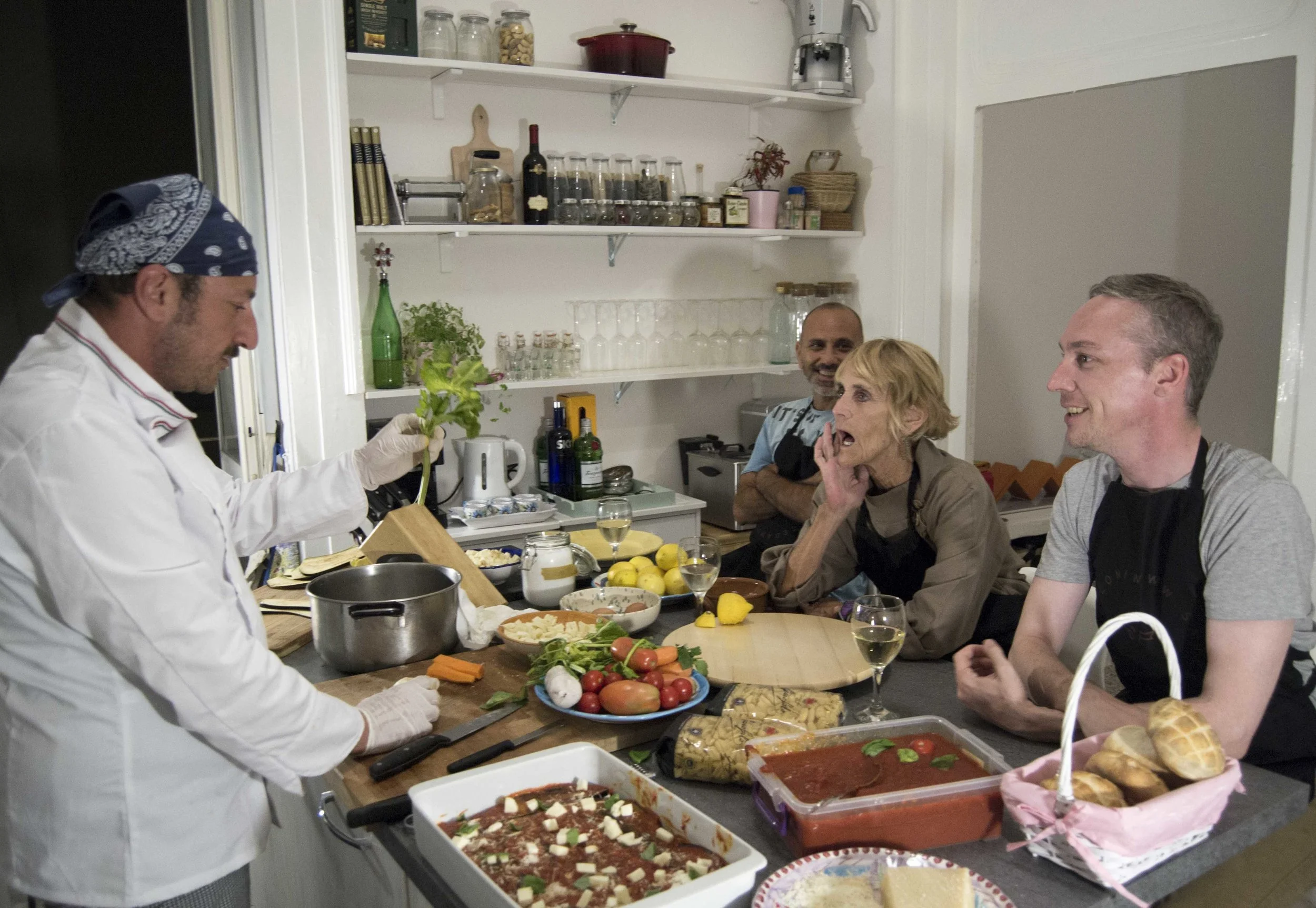The Courses of an Italian Meal
The Italian meal is more marathon than sprint. More accurately, the Italian meal is a languorous amble down a country road with ample comfort breaks and conversation. I fondly recall my first Italian meal at a country inn somewhere on a hilltop in Val d’Orcia. On break from my real job in Rome working as a contractor for the British Government, I was eager to burn through my generous per diem- the same per diem that my more prudent colleagues would use to pay off their student loan debt.
The siren call of Tuscany summoned me away from student loan repayment and straight to my first Italian meal where I gleefully discovered platters of prosciutto, cheeses, cured olives, marinated peppers, fried and stuffed zucchini blossoms. No amount of epic earwax or strapping me to a boat mast could have possibly prevented me from pouncing upon that table. The siren did not sing to me. She gavaged me. Fannie Mae and Freddie Mac be damned. They would canabalize themselves a few years later anyway. And that antipasti table was not going to serve itself.
I am not ashamed to admit that I crammed that plate full of every textured and colored morsel it could bear. Think your worst cruise ship cum bar mitzvah buffet buffoonery. When I triumphantly brought that beleaguered plate back to our table, the server poured me a glass of rosso and asked what we would like to order.
“Whatttttt!!!!? This is not the full meal?” I asked while bashfully (who am I kidding GIDDILY!) motioning to the cupola of food heaped on my plate.
“No signora.”
That was when I learned about primi, secondi, dolci, amari and the spirited cast of characters that form the Italian meal. By the end of that inaugural night, I had sampled not only every offering of the antipasti buffet, but also a wild boar and fennel lasagna, roasted veal, potatoes, carrots, panna cotta and several generous shots of local amaro. Many similar lazy meals have since followed. I have learned to pace myself at the antipasti table. But whatever one over eats at the beginning, one can over drink at the end…. It isn’t called a digestive for nothing.
Below is a summary of each course of the typical Italian meal. We might not eat this way every day. Maybe on a Tuesday night we will just do a primo or a secondo. But one thing we never do is a piatto combinato, mixing pasta with a main dish of meat. That is vulgar and disrespectful to both pasta and meat. Pasta is its own dish. Let’s afford her the respect she deserves.
Antipasti (Appetizer)
Antipasti means before the meal or before the pasta. Across Italy it can take many shapes. It opens the appetite and generally we drink a bubbly or white wine with antipasti. It can be olives, zucchini fritters, croquets, arancini or cured meats and cheeses (although really good cured prosciutto can similarly be served as a secondo for a more relaxed family dinner). Weddings and more formal events often feature an antipasti buffet followed by a seated antipasto course. Word of advice- don’t eat too much bread or you will not make it through the next course.
Primi (First Course)
This is is typically the pasta course. And oh the options are endless. Pici ragù, spaghetti and clams, tagliatelle and porcini. This course may also feature risottos and soups. Never would you mix fish and meat in the same meal. So if you are serving a meat-based pasta dish, you will also serve a meat based main course. An Italian meal is an opera that must lyrically build up to a satisfying crescendo.
Secondi (Second/ Main Course)
Your main course is usually a meat or fish course and always pairs pleasantly with what you have enjoyed as your primo. Often includes grilled or roast meats. If your primo is a heavy baroque lasagna, your secondo will likely be a lighter or more rustic chunk of roasted meat. The key is synchronicity!
Contorni (Side Dishes)
Every Italian meal includes at least two or three seasonal side dishes. I was surprised to discover that one does not eschew double carbs in Italy. If you have enjoyed a primo of pasta, there is no need to avoid a potato as a contorno. (If this troubles your carb laden sensibilities, then you will be doubly shocked to discover that there also exists a dish called pasta with potatoes and predictably, it is delicious!) In Italian families, several colorful and seasonal contorni will often decorate the center of the table, especially on Sunday. Frankly, my favorite part of any Italian meal are the contorni. You can learn so much about the season and region you inhabit simply by observing and tasting the contorni.
Dolci
Some formal meals include a sorbetto or Macedonia (fruit salad) before the dessert. But the real star after your main course is dolci, meaning sweets. You could set your calendar by what dessert you are served in Italy. Saint days, holidays and seasons and regions all feature uniquely spectacular desserts. Tiramisu seems the most famous outside of Italy. But each region has an abundance of local specialties. Delizia al Limone on the Amalfi, cantuccini in Tuscany, cannoli in Sicily. When in doubt, order what everyone else around you is eating. And always, always save room for dessert.
Digestivi
Just when you think you are about to pop, a bottle of unknown provenance appears before you. This is the local tincture. It could be fennel, lemon, blueberry, walnut, cantaloupe. Whatever it is, help yourself. It will kick start your digestive process and when in a few hours, you feel that old familiar feeling of hunger again you will think, wow…. against all odds that weird brown liquor I guzzled actually did something besides get me drunk.









